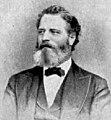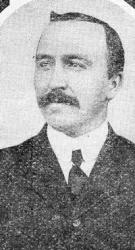Planning worship?
Check out our sister site, ZeteoSearch.org,
for 20+ additional resources related to your search.
- |
User Links
Search Results
Take My Life, and Let It Be
Author: Frances Ridley Havergal Meter: 7.7.7.7.7 Appears in 1,196 hymnals Hymnal Title: Calvin Hymnary Project First Line: Take my life and let it be Lyrics: 1 Take my life and let it be
consecrated, Lord, to thee.
Take my moments and my days;
let them flow in endless praise,
let them flow in endless praise.
2 Take my hands and let them move
at the impulse of thy love.
Take my feet and let them be
swift and beautiful for thee,
swift and beautiful for thee.
3 Take my voice and let me sing
always, only, for my King.
Take my lips and let them be
filled with messages from thee,
filled with messages from thee.
4 Take my silver and my gold;
not a mite would I withhold.
Take my intellect and use
every power as thou shalt choose,
every power as thou shalt choose.
5 Take my will and make it thine;
it shall be no longer mine.
Take my heart it is thine own;
it shall be thy royal throne,
it shall be thy royal throne.
6 Take my love; my Lord, I pour
at thy feet its treasure store.
Take myself, and I will be
ever, only, all for thee,
ever, only, all for thee.
Psalter Hymnal, (Gray) Topics: Stewardship of Substance
Take My Life, and Let It Be
[Take my life, and let it be]
Appears in 1 hymnal Hymnal Title: A Hymnal for Joyous Youth Tune Sources: German Incipit: 34565 43234 54333 Used With Text: Take my life, and let it be
[Take my life, and let it be]
Take my life, and let it be, consecrated
Author: Frances Ridley Havergal Hymnal: A Chord #d104 (1894) Hymnal Title: A Chord Languages: English
Take my life, and let it be, consecrated
Take my life, and let it be, consecrated
Author: Frances Ridley Havergal Hymnal: A Hundred Songs of God and His Kingdom #d76 (1940) Hymnal Title: A Hundred Songs of God and His Kingdom Languages: English
Take my life, and let it be, consecrated
Take My Life, and Let It Be
Author: Frances R. Havergal Hymnal: A Hymnal for Friends #52 (1942) Hymnal Title: A Hymnal for Friends Languages: English Tune Title: ELLINGHAM
Take My Life, and Let It Be
Orlando Gibbons

1583 - 1625 Person Name: O. Gibbons (1583-1625) Hymnal Title: A Missionary Hymn Book Composer of "SONG 13" in A Missionary Hymn Book Orlando Gibbons (baptised 25 December 1583 – 5 June 1625) was an English composer, virginalist and organist of the late Tudor and early Jacobean periods. He was a leading composer in the England of his day.
Gibbons was born in Cambridge and christened at Oxford the same year – thus appearing in Oxford church records.
Between 1596 and 1598 he sang in the Choir of King's College, Cambridge, where his brother Edward Gibbons (1568–1650), eldest of the four sons of William Gibbons, was master of the choristers. The second brother Ellis Gibbons (1573–1603) was also a promising composer, but died young. Orlando entered the university in 1598 and achieved the degree of Bachelor of Music in 1606. James I appointed him a Gentleman of the Chapel Royal, where he served as an organist from at least 1615 until his death. In 1623 he became senior organist at the Chapel Royal, with Thomas Tomkins as junior organist. He also held positions as keyboard player in the privy chamber of the court of Prince Charles (later King Charles I), and organist at Westminster Abbey. He died at age 41 in Canterbury of apoplexy, and a monument to him was built in Canterbury Cathedral. A suspicion immediately arose that Gibbons had died of the plague, which was rife in England that year. Two physicians who had been present at his death were ordered to make a report, and performed an autopsy, the account of which survives in The National Archives:
We whose names are here underwritten: having been called to give our counsels to Mr. Orlando Gibbons; in the time of his late and sudden sickness, which we found in the beginning lethargical, or a profound sleep; out of which, we could never recover him, neither by inward nor outward medicines, & then instantly he fell in most strong, & sharp convulsions; which did wring his mouth up to his ears, & his eyes were distorted, as though they would have been thrust out of his head & then suddenly he lost both speech, sight and hearing, & so grew apoplectical & lost the whole motion of every part of his body, & so died. Then here upon (his death being so sudden) rumours were cast out that he did die of the plague, whereupon we . . . caused his body to be searched by certain women that were sworn to deliver the truth, who did affirm that they never saw a fairer corpse. Yet notwithstanding we to give full satisfaction to all did cause the skull to be opened in our presence & we carefully viewed the body, which we found also to be very clean without any show or spot of any contagious matter. In the brain we found the whole & sole cause of his sickness namely a great admirable blackness & syderation in the outside of the brain. Within the brain (being opened) there did issue out abundance of water intermixed with blood & this we affirm to be the only cause of his sudden death.
His death was a shock to peers and the suddenness of his passing drew comment more for the haste of his burial – and of its location at Canterbury rather than the body being returned to London. His wife, Elizabeth, died a little over a year later, aged in her mid-30s, leaving Orlando's eldest brother, Edward, to care for the children left orphans by this event. Of these children only the eldest son, Christopher Gibbons, went on to become a musician.
One of the most versatile English composers of his time, Gibbons wrote a quantity of keyboard works, around thirty fantasias for viols, a number of madrigals (the best-known being "The Silver Swan"), and many popular verse anthems. His choral music is distinguished by his complete mastery of counterpoint, combined with his wonderful gift for melody. Perhaps his most well known verse anthem is This is the record of John, which sets an Advent text for solo countertenor or tenor, alternating with full chorus. The soloist is required to demonstrate considerable technical facility at points, and the work at once expresses the rhetorical force of the text, whilst never being demonstrative or bombastic. He also produced two major settings of Evensong, the Short Service and the Second Service. The former includes a beautifully expressive Nunc dimittis, while the latter is an extended composition, combining verse and full sections. Gibbons's full anthems include the expressive O Lord, in thy wrath, and the Ascension Day anthem O clap your hands together for eight voices.
He contributed six pieces to the first printed collection of keyboard music in England, Parthenia (to which he was by far the youngest of the three contributors), published in about 1611. Gibbons's surviving keyboard output comprises some 45 pieces. The polyphonic fantasia and dance forms are the best represented genres. Gibbons's writing exhibits full mastery of three- and four-part counterpoint. Most of the fantasias are complex, multisectional pieces, treating multiple subjects imitatively. Gibbons's approach to melody in both fantasias and dances features a capability for almost limitless development of simple musical ideas, on display in works such as Pavane in D minor and Lord Salisbury's Pavan and Galliard.
In the 20th century, the Canadian pianist Glenn Gould championed Gibbons's music, and named him as his favorite composer. Gould wrote of Gibbons's hymns and anthems: "ever since my teen-age years this music ... has moved me more deeply than any other sound experience I can think of." In one interview, Gould compared Gibbons to Beethoven and Webern:
...despite the requisite quota of scales and shakes in such half-hearted virtuoso vehicles as the Salisbury Galliard, one is never quite able to counter the impression of music of supreme beauty that lacks its ideal means of reproduction. Like Beethoven in his last quartets, or Webern at almost any time, Gibbons is an artist of such intractable commitment that, in the keyboard field, at least, his works work better in one's memory, or on paper, than they ever can through the intercession of a sounding-board.
To this day, Gibbons's obit service is commemorated every year in King's College Chapel, Cambridge.
--wikipedia.org
Orlando Gibbons
Walter Bond Gilbert

1829 - 1910 Person Name: Gilbert Hymnal Title: An Evening Service Book Composer of "MAIDSTONE" in An Evening Service Book Walter Bond Gilbert DMus United Kingdom 1829-1910. Born at Exeter, Devon, England, he studied music under Alfred Angel, Samuel Wesley and Henry Bishop. He attended New College, Oxford and the University of Toronto, Canada. He was organist in Devon at Topsham in 1847, Bideford in 1849, Kent at Tonbridge in 1854, Old Colliegiate Church, Maidstone in 1859, Lee in 1866, Boston, Lincolnshirein 1868, and Trinity Chapel in New York City in 1869-1897. He taught music at Tonbridge School, helped found the College of Organists, edited the America Episcopal Hymnal, and wrote a number of monographs, including “Antiquities of Maidstone”. He continued to write church music, producing services, oratorios (including “The Restoration of Israel and St. John, 1857), organ works, and anthems. He died at Headington, Oxford, England.
John Perry
Walter Bond Gilbert
B. B. Beall

1874 - 1945 Person Name: B. B. B. Hymnal Title: Bright Beautiful Bells Author (Refrain) of "Take My Life and Let It Be" in Bright Beautiful Bells Benjamin Burke (B. B.) Beall, was born on May 25, 1874, Dallas, Georgia. Benjamin graduated in music and elocution from the Texas Musical Institute. He ran the B. B. Beall publishing company in Douglasville, Georgia. He died on October 7, 1945, in Douglasville, Georgia.
Some of his publications:
Bright Beautiful Bells (Birmingham, Alabama: B. B. Beal & Company, 1900)
Gems for the Sunday Schools (Douglasville, Georgia: B. B. Beall & Company, 1902)
Lasting Songs, B. B. Beall et al (Douglasville, Georgia: B. B. Beall & Company, 1910)
NN, Hymnary editor. Source: www.hymntime.com/tch/
B. B. Beall


 My Starred Hymns
My Starred Hymns


